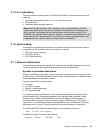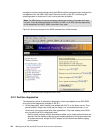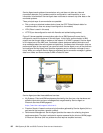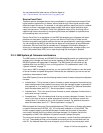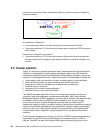
88 IBM System p5 520 and 520Q Technical Overview and Introduction
cannot be concurrently activated, are deferred. Figure 3-4 shows the system firmware file
naming convention.
Figure 3-4 System firmware file naming convention
An installation is disruptive if:
The release levels (XXX) of currently installed and new firmware are different.
The service pack level (YYY) and the last disruptive service pack level (ZZZ) are equal in
new firmware.
Otherwise, an installation is concurrent if:
The service pack level (YYY) of the new firmware is higher than the service pack level
currently installed on the system and the above conditions for disruptive installation are
not met.
3.3 Cluster solution
Today's IT infrastructure requires that servers meet increasing demands, while offering the
flexibility and manageability to rapidly develop and deploy new services. IBM clustering
hardware and software provide the building blocks, with availability, scalability, security, and
single-point-of-management control, to satisfy these needs. The advantages of clusters are:
Large-capacity data and transaction volumes, including support of mixed workloads
Scale-up (add processors) or scale-out (add servers) without down time
Single point-of-control for distributed and clustered server management
Simplified use of IT resources
Designed for 24x7 access to data applications
Business continuity in the event of a disaster
The POWER processor-based AIX 5L and Linux cluster target scientific and technical
computing, large-scale databases, and workload consolidation. IBM Cluster Systems
Management software (CSM) is designed to provide a robust, powerful, and centralized way
to manage a large number of POWER5 processor-based servers, all from a single
point-of-control. Cluster Systems Management can help lower the overall cost of IT
ownership by helping to simplify the tasks of installing, operating, and maintaining clusters of
servers. Cluster Systems Management can provide one consistent interface for managing
both AIX 5L and Linux nodes (physical systems or logical partitions), with capabilities for
remote parallel network installation, remote hardware control, and distributed command
execution.
Cluster Systems Management for AIX 5L and Linux on POWER processor-based servers is
supported on the p5-520 and the p5-520Q servers. For hardware control, an HMC is
required. One HMC can also control several IBM System p5 servers that are part of the
01SFXXX_YYY_ZZZ
Firmware Release
level
Firmware Service
Pack level
Last disruptive Firmware
Service Pack level
01SFXXX_YYY_ZZZ
Firmware Release
level
Firmware Service
Pack level
Last disruptive Firmware
Service Pack level




